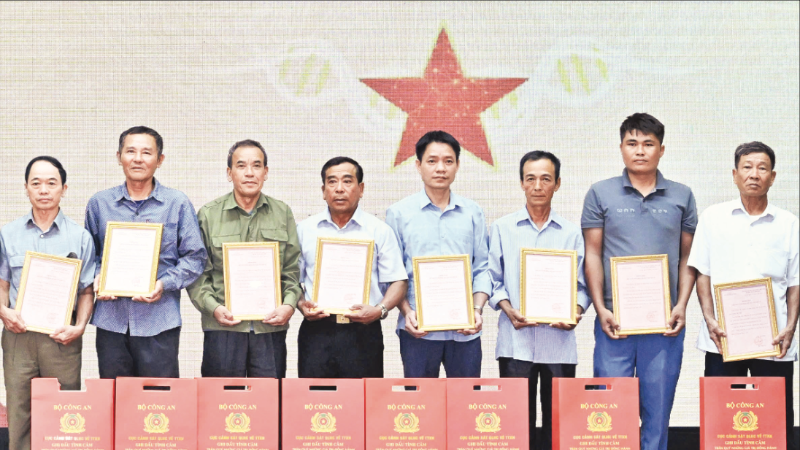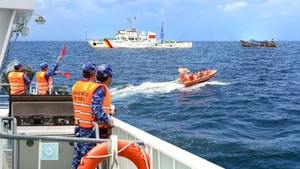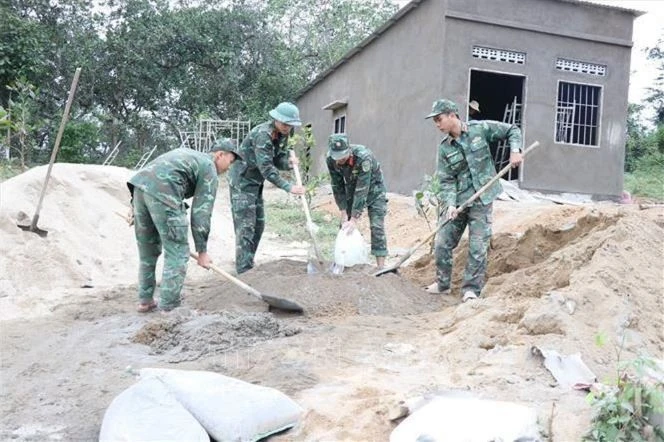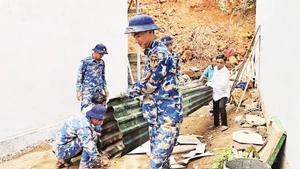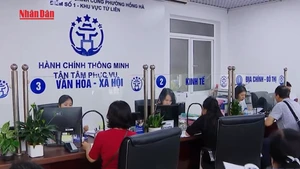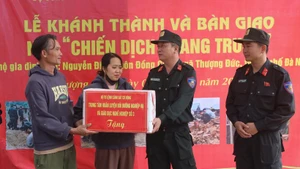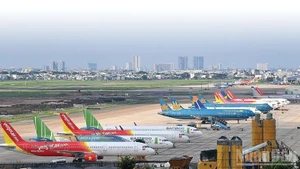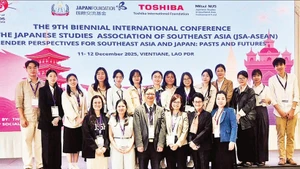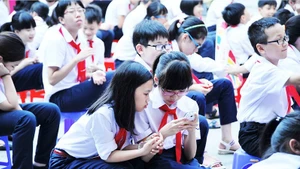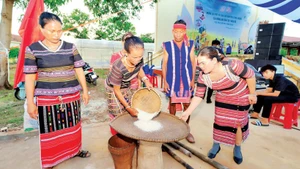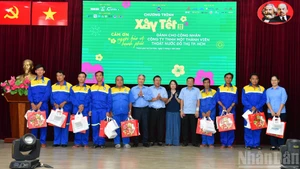Nhan Dan Newspaper reporter Anh Tho recaps readers on the journey to identify the unknown martyrs of K20 Hospital
In 2020, Nhan Dan Newspaper received a letter from relatives of martyrs requesting assistance in searching for the graves of their loved ones who laid down their lives in Cambodia.
From that letter, Nhan Dan reporters began investigations — verifying facts, seeking witnesses, accessing records, and working with relevant authorities.
The first important witness we found was veteran Phan Ngoc Huan in Uar Commune, Gia Lai Province, a former official at K20 Hospital, who had cared for, and buried many comrades. Another witness was Colonel Vu Van Son, former Commander of K52 searching team under the Gia Lai Provincial Military High Command, who directly organised the repatriation of the martyrs’ remains from K20 Hospital.
At the request of the newspaper, the Department of Policies under the General Political Department of the Viet Nam People's Army provided a list of 128 soldiers who perished in Ochalong Commune (Siem Bouk District, Stung Treng Province, Cambodia), where K20 Hospital was stationed.
The department requested the Gia Lai Provincial Military High Command to report to Provincial Steering Committee 515 and Military Region 5; to direct relevant units and the K52 searching team to coordinate in the process of searching for, repatriating, handing over, and burying the remains of the K20 Hospital martyrs.
In October 2020, Nhan Dan Newspaper published a series of articles titled “The Difficult Journey to Identify Unknown Martyrs” highlighting that the remains of martyrs who died at K20 Hospital, Cambodia, had been gathered at Duc Co District Martyrs’ Cemetery but remained unidentified. The newspaper also called on the authorities to promptly collect biological information to verify identities of the unknown martyrs.
After the articles were published, the Department of Martyrs and Wounded Soldiers sent an official letter requesting the Gia Lai Provincial Department of Labour, Invalids and Social Affairs, now the provincial Department of Home Affairs, to coordinate with the provincial Military High Command to verify the information.
In the dry seasons of 2009–2010 and 2010–2011, K52 searching team repatriated 99 sets of remains of martyrs who died at K20 Hospital, Cambodia, and reburied them in Duc Co District Martyrs’ Cemetery.
The verification results showed that in the dry seasons of 2009–2010 and 2010–2011, K52 searching team, led by Pham Ngoc Huan, repatriated 99 sets of remains of martyrs who died at K20 Hospital, Cambodia, and reburied them in Duc Co District Martyrs’ Cemetery.
On January 4, 2021, the Department of Martyrs and Wounded Soldiers, in coordination with the National Institute of Forensic Medicine (Ministry of Health), conducted biological sample collection from the remains, with 93 out of 99 sets of remains meeting the conditions for DNA testing.
On November 18, 2022, the department sent a document in response to Nhan Dan Newspaper, stating that by September 22, 2022, the National Institute of Forensic Medicine had completed its analysis and identified 15 martyrs who died at K20 Hospital.
After the authorities sent notification letters to the families of the 15 martyrs, their remains were welcomed back to their hometowns.
Most touching was the case of Tran Thi Men, 92, mother of martyr Nguyen Cuu Sinh, from Chuong My Ward, Ha Noi.
In the early morning on December 22, 2022, when the remains of Sinh arrived home, Men was waiting on the doorstep. From that moment, she quietly held the small earthenware urn containing her son's remains. Two months earlier, bedridden and near death, she had summoned the strength to live on just to see her son return. Exactly one month after Sinh was laid to rest in his hometown, his mother peacefully passed away.
Dr Nguyen Duc Nhu, Director of the National Institute of Forensic Medicine, stated that all 93 samples of the K20 Hospital martyrs’ remains were analysed, and over 80% yielded DNA sequences. The institute also received approximately 50 samples from the martyrs’ relatives for comparison.
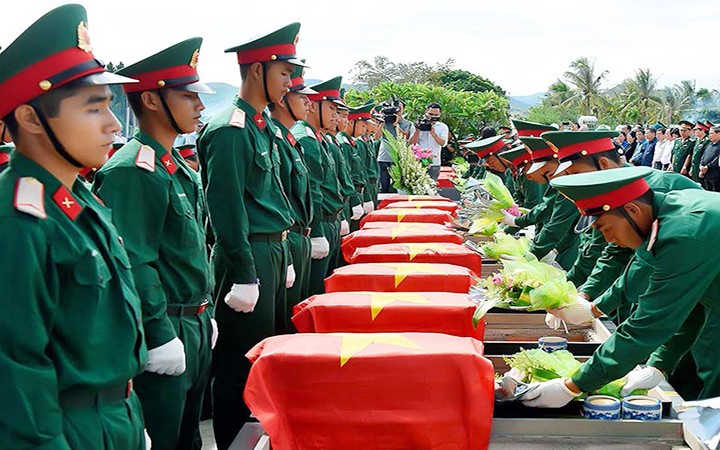
The Ministry of Public Security has tested over 11,000 DNA samples from martyrs’ relatives. Sixteen cases of K20 Hospital martyrs’ DNA samples have been found to match the maternal relationship with the DNA samples of 27 martyrs’ relatives.
One of them is martyr Trinh Quang Lam from Nga An Commune, Thanh Haa Province.
Trinh Van Tuan, the younger brother of Lam, recounted that Lam volunteered to join the army, despite his family having previously lost an elder brother due to the war. In January 1971, the family received Lam’s death notice but still hoped he was alive.
Only after the country’s reunification, when Lam did not return, did the family accept the truth and begin searching for his grave.
After many years of fruitless searching, the family discovered a grave bearing the name Trinh Quang Lam at Dong Nai Province Martyrs’ Cemetery with matching details. Believing it was his grave, Tuan and family members frequently paid tribute their loved one.
It was not until the Ministry of Public Security undertook sample collection from relatives that the family was surprised to learn that martyr Lam’s remains actually rested at Duc Co District Martyrs’ Cemetery in Gia Lai Province.
Among the 16 newly identified martyrs of K20 Hospital is martyr Pham Van Chang, originally from Tu Ky District, Hai Duong Province, now part of Hai Phong City.
Nguyen Van Trung, a relative of Chang, recalled that at 18 years old, despite having received an admission letter from Ha Noi Pedagogical University, Chang volunteered for military service and was then killed in action.
Identifying the unknown martyrs represents a steadfast effort to soothe the wounds of war and pays deep gratitude to those who laid down their lives for national independence and freedom.
Before enlisting in January 1971, martyr Nguyen Quoc Hoi was also a teacher. The night before heading to the battlefield, he joined a family meal, during which he asked relatives to take care of his bicycle, so that when he returned, he would ride it to school.
But just one year later, in May 1972, the family received his death notice. For many years, they searched various cemeteries in vain before the Ministry’s DNA sample collection enabled a match.
Nguyen Van Hai, brother of martyr Nguyen Van Yen from Duyen Ha Commune, Hung Yen Province, told reporters that the family searched desperately but never knew where Yen’s grave was until the DNA results confirmed his resting place.
According to the list provided by the Department of Policies – General Political Department, these four martyrs all died in 1971 at K20 Hospital, due to severe malaria.
After decades of searching, the identities of 31 martyrs of K20 Hospital have been confirmed. This achievement was made possible not only thanks to DNA testing technology but also the persistent efforts of agencies, witnesses, and relatives, which all began with a single letter sent to Nhan Dan Newspaper.
Identifying these 31 unknown martyrs not only brings them back to the memories of their families but also represents a steadfast effort to soothe the wounds of war and pays deep gratitude to those who laid down their lives for national independence and freedom.
